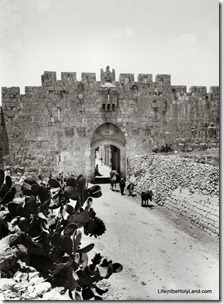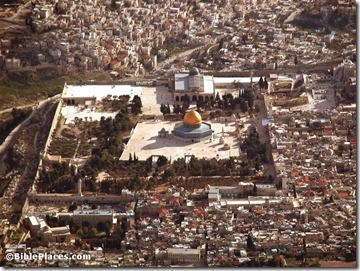Conservation work on the Lions Gate (aka St. Stephen’s Gate) has been finished, according to a press release issued by the Israel Antiquities Authority.
The work of preserving and stabilizing the Lions Gate in the Old City’s eastern wall has been completed. This impressive gate is the last of the seven open gates of the city wall that were meticulously and professionally treated in recent years by the Conservation Department of the Israel Antiquities Authority. This was done within the framework of the comprehensive project of conserving and rehabilitating the Old City walls, at the initiative of and with funding provided by the Jerusalem Development Authority and the Prime Minister’s Office.
At the start of the conservation work on the Lions Gate the project engineers discovered that the sentry’s post situated above the gate’s entrance, which was where the soldier guarding the tower once stood, was in danger of collapse. The sentry’s post was entirely dismantled, broken stones in it were replaced and it was returned and secured to its original place on the wall. The two lions carved on either side of the gate also underwent conservation and cleaning.
Within the framework of the conservation work carried out on the Old City walls in Jerusalem, which lasted five years, the walls were conserved which had been built and renovated in the mid-sixteenth century by the Ottoman sultan Suleiman I. Both sides of the wall were treated for a total distance of c. 3,800 m. Each and every one of the stones in the wall was photographed with a laser, documented and studied. Approximately 1,000 deteriorating stones were stabilized; c. 2,000 square meters at the top of the wall were stabilized and sealed to prevent the penetration of water; c. 350 merlons and embrasures were conserved and the stone work in them was completed; c. 2,000 square meters of stones in the wall were dismantled and rebuilt due to vegetation that had taken root in them and a total of c. 5,000 square meters of the walls’ surface were cleaned.
The press release includes quotes from several officials as well as 12 high-resolution photographs of the work on seven of the Old City gates.

